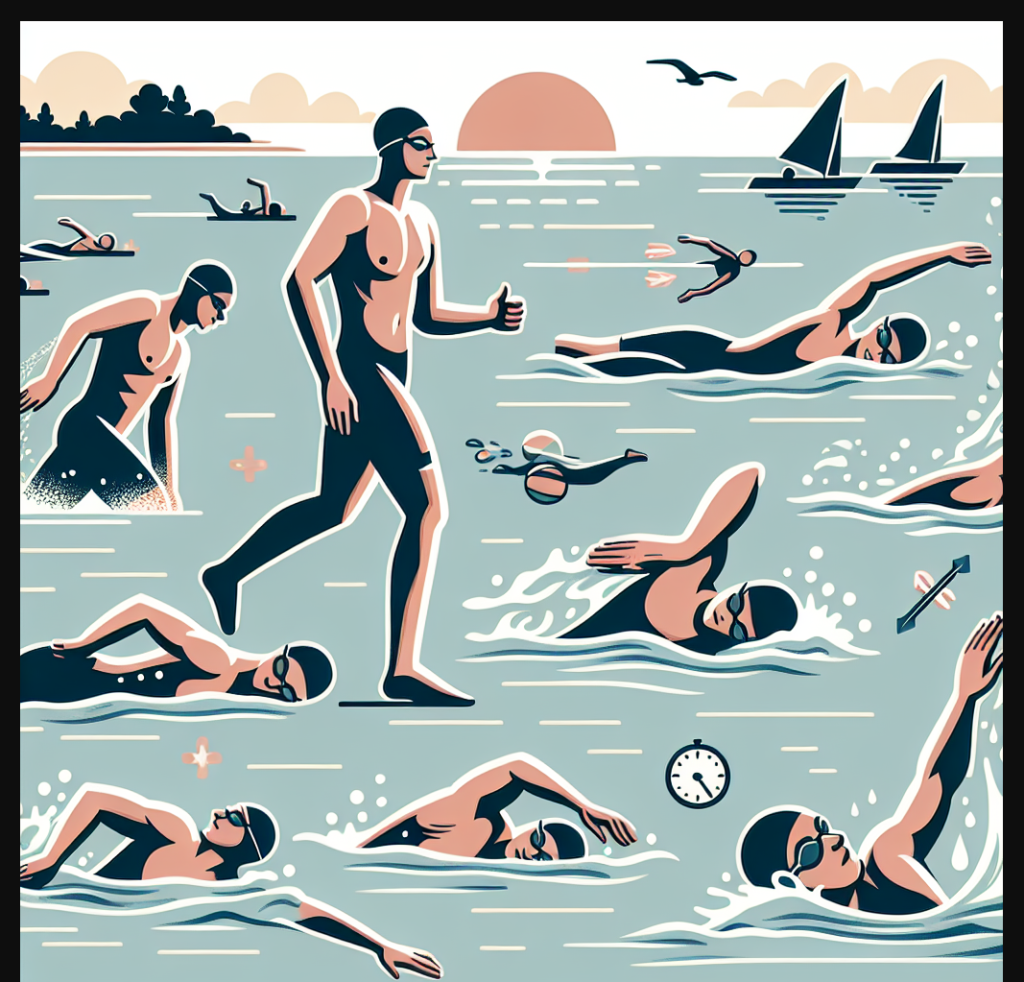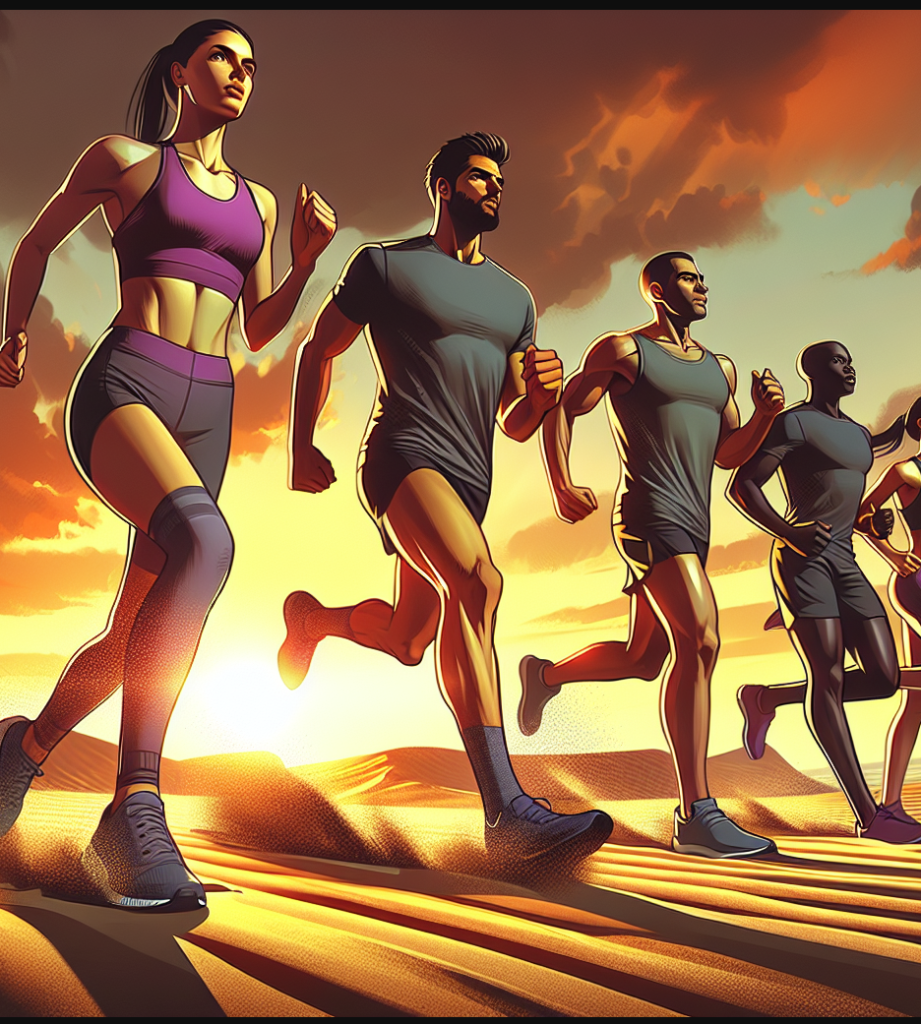Dynamic Stretching for Runners
Hey there, fellow runners! Ever feel like your warm-up routine could use a little boost? Well, you’re in the right place. Today on Running with Joe, we’re diving into the world of dynamic stretching for runners. You know, those active movements that get your muscles ready for action and your blood pumping. I’ve personally found that incorporating these stretches into my pre-run ritual has not only improved my performance but also kept those pesky injuries at bay. Curious to find out how dynamic stretching can transform your running game? Stick around—you’re going to love this!
Introduction to Dynamic Stretching

Let’s dive right into dynamic stretching, shall we? If you’ve ever felt like your warm-up routine was a bit lackluster, you’re not alone. I used to think a few static stretches and a quick jog were enough to get me ready for a run. But once I discovered dynamic stretching, it was a game-changer. These active movements are designed to prepare your muscles for the specific demands of running, increasing your range of motion and getting your blood flowing. Think of it as giving your body a wake-up call before you hit the pavement.
So, what exactly is dynamic stretching? Unlike static stretching, where you hold a position for a period of time, dynamic stretching involves continuous movement. This helps to warm up your muscles more effectively and can even improve your performance. For example, leg swings, high knees, and butt kicks are all great dynamic stretches that mimic the movements you’ll be doing during your run. Not only do these exercises get your muscles ready, but they also help to activate your nervous system, making you more alert and focused. Trust me, once you start incorporating dynamic stretches into your routine, you’ll wonder how you ever ran without them.
Benefits of Dynamic Stretching
Dynamic stretching offers a multitude of benefits that can significantly enhance your running experience. First and foremost, these active movements increase your heart rate and blood flow, prepping your muscles for the upcoming exertion. This means you’ll be less likely to experience those early-run stiffness and sluggishness that can throw off your pace. By incorporating dynamic stretches like leg swings, butt kicks, and high knees into your pre-run routine, you’re essentially giving your body a wake-up call, letting it know that it’s time to perform.
But the perks don’t stop there. Dynamic stretching also plays a crucial role in injury prevention. Unlike static stretching, which can sometimes lead to muscle strains if done cold, dynamic stretches gently ease your muscles and joints through their full range of motion. This not only helps to improve flexibility and mobility but also reduces the risk of common running injuries like strains and sprains. For more on keeping those injuries at bay, check out our detailed guide on injury prevention techniques for runners. Additionally, by regularly practicing dynamic stretches, you can enhance your overall running performance. This is because these movements activate the muscle groups you’ll be using during your run, making them more responsive and efficient. If you’re looking to take your performance to the next level, you might find our tips on enhancing your running performance particularly useful.
Top Dynamic Stretches for Runners
Alright, let’s get into the nitty-gritty of dynamic stretching with some of my favorite stretches that have made a world of difference in my running game. These stretches are designed to get your muscles fired up, improve your range of motion, and ensure you’re ready to hit the ground running—literally!
First up, we have leg swings. These are fantastic for loosening up your hip flexors and hamstrings. To do leg swings, stand next to a wall or something sturdy to hold onto. Swing one leg forward and backward in a controlled motion, gradually increasing the range of motion. Do about 10-15 swings on each leg. Trust me, your hips will thank you!
Next on the list is the walking lunge. This one is a powerhouse for engaging your quads, glutes, and hip flexors. Step forward into a lunge position, making sure your front knee is directly over your ankle. Push off with your back foot to bring it forward into the next lunge. Aim for 10-12 lunges on each leg. Not only does this stretch feel great, but it also helps build strength and stability.
Don’t forget the high knees—a classic! This dynamic stretch is perfect for getting your blood pumping and your legs moving. Simply jog in place while lifting your knees as high as possible, aiming to get them to waist height. Do this for about 30 seconds to a minute. It’s a great way to elevate your heart rate and prep your body for the run ahead.
Another gem is the butt kicks. This one targets your hamstrings and helps improve your running form. While jogging in place, kick your heels up towards your glutes. Keep the movement quick and controlled, doing this for about 30 seconds to a minute. You’ll feel your legs waking up in no time!
Lastly, we have the toy soldier stretch. This one is excellent for your hamstrings and lower back. Stand tall and kick one leg straight out in front of you while reaching for your toes with the opposite hand. Alternate legs and repeat for about 10-12 kicks on each side. It’s a fun way to get those legs moving and ready for action.
Incorporating these dynamic stretches into your pre-run routine can make a significant difference in your performance and help prevent injuries. Give them a try, and you’ll likely find that your runs feel smoother and more comfortable. Happy running!
Pre-Run Dynamic Stretch Routine
Alright, let’s dive into the meat of things—your pre-run dynamic stretch routine. Think of this as your secret weapon to unlock better performance and keep injuries at bay. When I first started incorporating dynamic stretches, I was amazed at how much more fluid and ready my body felt. It’s like giving your muscles a wake-up call, telling them, ‘Hey, it’s go time!’
So, what should your pre-run dynamic stretch routine look like? Here are some essential stretches that have worked wonders for me:
- Leg Swings: Stand next to a wall or a sturdy object for balance. Swing one leg forward and backward, then switch to side-to-side. Aim for 10-15 swings each direction.
- Walking Lunges: Take a big step forward with one leg, lowering your hips until both knees are at a 90-degree angle. Push off your front leg to bring your back leg forward into the next lunge. Do about 10-12 lunges on each side.
- High Knees: Run in place while driving your knees up towards your chest as high as possible. Keep a quick pace for about 30 seconds to get your heart rate up.
- Butt Kicks: Similar to high knees, but this time, kick your heels up towards your glutes. This one’s great for loosening up your quads and getting your blood flowing.
- Arm Circles: Don’t forget your upper body! Extend your arms out to the sides and make small circles, gradually increasing the size. Do this for about 30 seconds in each direction.
These dynamic stretches are designed to engage your muscles and improve your range of motion, setting you up for a successful run. Plus, they only take about 5-10 minutes, making them an easy addition to your routine. Trust me, once you make this a habit, you’ll wonder how you ever ran without it!
And don’t forget, cooling down after your run is just as crucial. For some great tips on post-run routines, check out my cool-down guide. Happy running!
Avoiding Injuries with Stretching
Hey, have you ever started a run and felt a twinge or tightness that made you think, ‘Uh-oh, this can’t be good’? You’re not alone. One of the best ways to avoid those annoying injuries is by incorporating dynamic stretching into your routine. Unlike static stretching, which you do while standing still, dynamic stretches are active movements that help to increase your range of motion, improve circulation, and get your muscles ready for the run ahead.
Dynamic stretching is like giving your body a heads-up that it’s time to move. Think about it: If you were about to take a long drive, you’d probably warm up your car engine first, right? The same principle applies to your muscles. By gradually increasing your heart rate and loosening up your joints, you’re setting yourself up for a safer, more effective workout. Here are a few key benefits:
- Enhanced Flexibility: Dynamic stretches improve your muscle elasticity, which helps you move more freely and reduces the risk of strains.
- Boosted Blood Flow: These movements increase circulation, delivering more oxygen to your muscles and helping them perform better.
- Injury Prevention: By warming up your muscles and joints, you’re less likely to experience pulls, tears, or other injuries.
Personally, I’ve found that adding a few dynamic stretches before my runs makes a world of difference. I used to skip stretching altogether, thinking it was just another step that took up precious time. But after dealing with a few too many injuries, I decided to give it a try. Now, I wouldn’t dream of starting a run without a quick dynamic warm-up. It doesn’t take long – just five to ten minutes – but the payoff is huge.
So next time you’re gearing up for a run, give dynamic stretching a shot. You’ll likely find that not only does it help you avoid injuries, but it also makes your runs feel smoother and more enjoyable. Happy running!
Dynamic Stretching for Runners Read More »














